Music in Circus: Who Leads, and Who Follows?
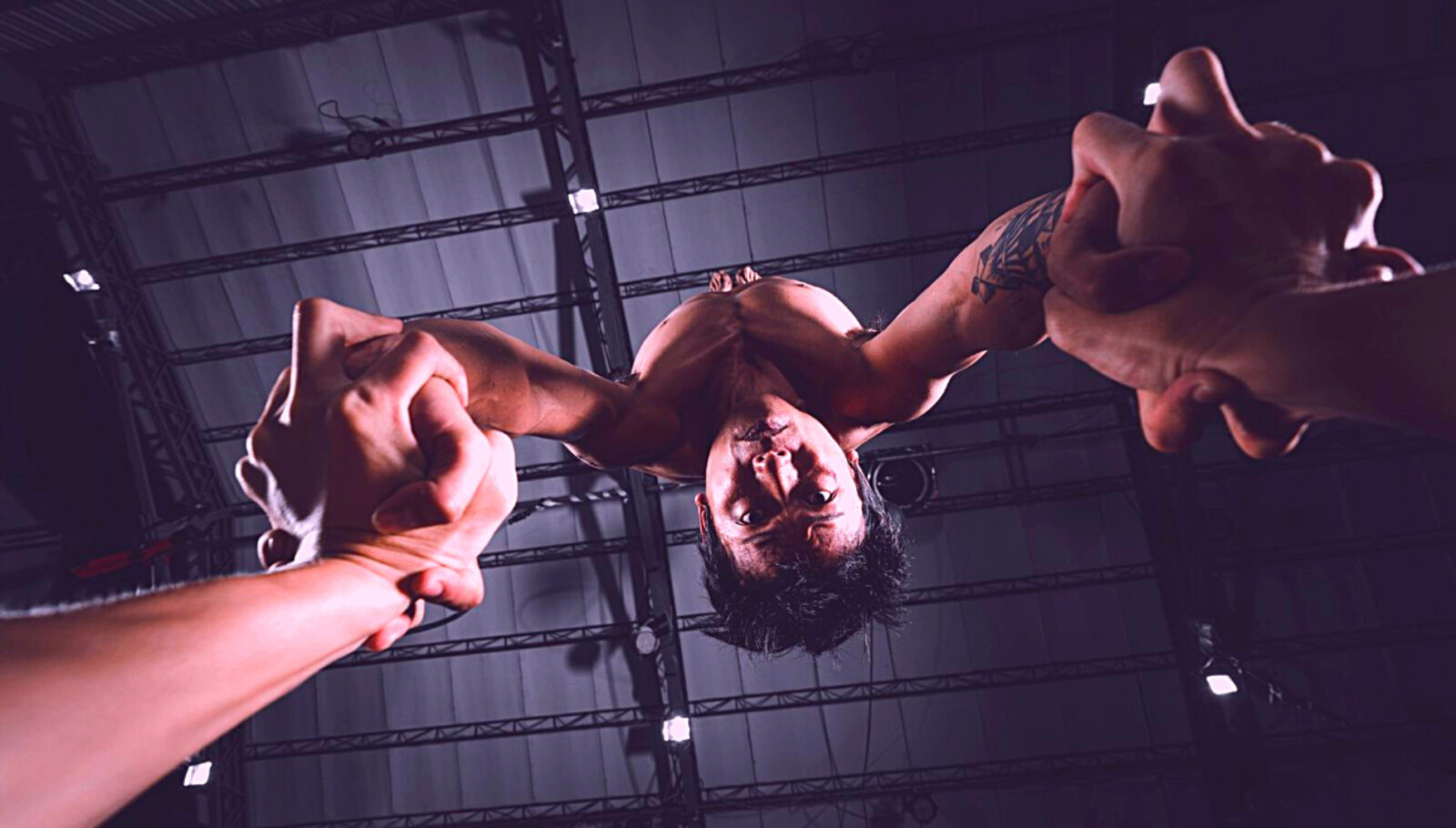
Whether it serves as the soundtrack to a one-person act or a large-scale ensemble piece, what role does music play within a circus show? In the first 2023 edition of the DuMaXi quarterly, published by Taiwan’s Formosa Circus Art (FOCA), interviewer/writer Yuhshan Lin brings us this thoughtful piece which ponders the creative implications of sound within stagecraft with the help of sound designer Blaire Ko and FOCA director and performer Kuan-Ting Chen.
If we look back on our experiences of seeing circus performances on the street, we’d easily realize that music is an indispensable part of things. When performers focus on all their techniques and tricks, music can fill the empty space between their movements and emotions and create expanded meanings. Moreover, the performers can form a partnership with the music, forging a bond like that of two jugglers working together.
To this panel, we invited Blaire Ko, a veteran and diversified composer and sound designer in the performing arts sector; and Kuan-Ting Chen, the artistic director of FOCA and director of its shows Circus Party and Circus as Folks. Kuan is still on the path of experimental circus, looking to find a place for circus within the modern performing arts by trial and error, by bringing circus into theatres. Blaire, who everyone hails as a master of his field, has already found his feet in many different sectors of sound design, including working with Kuan on Circus As Folks. Now he aims to find a big-picture view of circus music from a more unconventional position.
Yuhshan: What do you think the relationship between circus and music is?
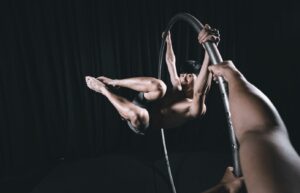
Kuan: In the past, circus music was mostly considered background music, meant to help the audience get into the scene from their own points of view—for instance, when the clown shows up, the funny music adds to and affirms their presence. After many years, performers started to use music more intentionally, working with the beat to show their skills and changing up their acts depending on the rhythm. Once we got to modern circus, music took on an even more prominent part in affecting the overall performance as a way to inspire and help the performers break out of their routine. Sort of like two people rowing a boat: the participants both support and yet restrain each other.
Blaire: I think music, in circus, is more like an ingredient or tool, depending on the needs of the user. Music encompasses so many different functions. As Chen said earlier, funny music makes you think of clowns; this is the suggestive effect of music, using internal connections—things within the audiences’ own minds—that let them perceive the intended effect through their own experiences. Outward connections are shown through the beat, giving performances a more distinct rhythm. The same beat can drive different performers to do the same act. Performers can also make contradictory decisions, like playing sad music during a funny act, to create alternative effects.
Yuhshan: Please share with us a piece of circus music that impresses you the most, and why?
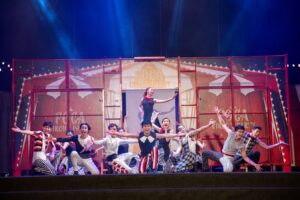
Kuan: I really enjoy the duo Fills Monkey’s show. It is different from most circus performances that focus more on skills and stunts; rather, the duo utilizes their expertise in music to make it an element of the show and then combines it with new magic, juggling, acrobatics, and more. Sometimes, one of them will play the instruments as the other one does tricks; sometimes they’ll both play instruments, then perform their act to a pre-recorded track, adjusting their performance pace to fit the rhythm. Fills Monkey’s performances feel closer to musicals than they do to pure circus. Their shows are always highly energetic, and the thrill never dips.
Blaire: What has left the greatest impression on me are the street circuses I watched when I was a child. Back in the 80s, I used to see one circus group that would parade through the markets with a tiger, using it as an advert to attract people to their shows. That tiger looked sick and thin to the bone, but at the time, people were not as aware of things in the animal rights department as we are today. There were also a lot of beggars that would sing “beggar’s song,” sort of like improvisational spoken poetry: they would say auspicious things to the people passing by, like that they would be lucky or have good fortune in the future, to get them to donate. In a way, I consider this a type of circus music, in a very loose sense of the term.
Yuhshan: In terms of the coordination of music and movement, what makes circus music different from dance or drama?
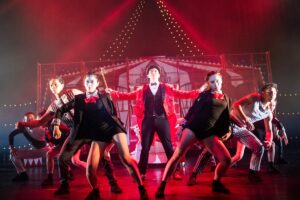
Kuan: Generally, they are the same. Modern circus also infuses elements of drama and dance.
Blaire: Circus and theatre are basically the same. However, if there must be an independent discourse for circus, I would say that circus must provide “spectacle”—aerials, human pyramids, pyrotechnics, etc.—the kind of thing that wows you, that makes circus special.
Kuan: I rather think that circus performances that focus on spectacle are dwindling in number. After all, spectacles are often just one Google search away.
In terms of circus, I prefer to interpret it as “a balance between hit and miss.” For instance, think of juggling: you can immediately tell the difference between a success and a mistake onstage, which would be odd in other areas of technique. How skillful you are will also affect how well your performance coordinates with the music—especially when there is live music.
Live music is always a great addition, because not only can it interact with the circus performers, but sometimes the performers and the musicians can even help each other out.
Blaire: Indeed. Live music has its own particular charisma. Even the instruments themselves look great on stage.
Yuhshan: Let’s talk about Circus Party and Circus as Folks. These shows employ two drastically different styles of sound design. How did the sound designers, directors, and performers work together for these two pieces?
Kuan: Circus Party is the typical contemporary circus show where we invite everyone to join us in the tents and have some fun. Therefore, the show’s content puts more emphasis on the performers’ needs and the overall flow and rhythm. Music is more of a supporting character.
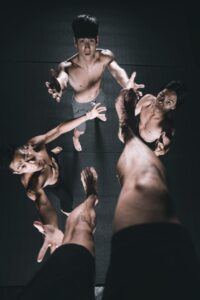
Blaire: To put it simply, the music is edited to fit the acts.
Kuan: As for Circus as Folks, I’ve gotten the impression that music impacts the performers’ emotions, so here, the music takes the leading role. This is the first time I’ve collaborated with an external sound designer like Blaire, who tailored the music to fit us. I remember that the key theme we offered him was “life.”
Blaire: It is very important for circus music to start by establishing a certain aura—an impression—and then deconstruct it, through different variations, to create highs and lows. We would continue to compare our key themes throughout the design process, and eventually landed on the idea that the sound of “life” we wanted was not some delicate piece deliberately designed, but rather, something more simple, spontaneous, casually curated. There are a few sections where the music is completely nonexistent.
Kuan: True; the music is all very light and casual. But I specifically embedded in it the elements of circus music from my childhood memory, such as accordions, trumpets, and orchestra. So you’ll be listening to a relaxing guitar song when, all of a sudden, there comes the trumpet—and it transforms the casual song into a funny one.I think this also mirrors the core idea of Circus as Folks: the tension between past and present. These startling sounds are like the struggles we face in everyday life.
Yuhshan: Lastly, let’s talk about the flukes that happen in live music—what are some that you have faced, and how did you manage to make the accident into a happy one?
Blaire: There are a lot of mishaps. There was this one time when we were performing on the beach, and our amplifier got washed away by the waves. We had no choice but to order a new one. There is no rhyme or reason to these things; the more experiences you have under your belt, the more easily you can determine if and how you can turn the situation around.
Kuan: I remember this one time, at the launch event for a wristwatch brand, where we collaborated with a beatboxer to create a sound by using pre-recorded music mixed with live beatboxing. All of us were working together within our acts at the same time. Then in the middle of the show, the pre-recorded music went mute, and all we were left with was the beatboxing. It had to pretty much carry the whole soundtrack from then on.
This wasn’t just an obstacle for the beatboxer, but for our performers as well, since we all had to work harder to lead and affect the audience. It was a challenging moment for all of us. Without music, performers need to put in extra effort.
Want to try a small sampling of some circus music? These trailers for FOCA’s “Circus Party” and “Circus as Folks,” respectively, will give you just a taste of the distinct sound character of each production.
Article originally written in Mandarin. Special thanks to Gwendoline Chen for her help with the translation. Thanks as well to FOCA's Martina Li for her facilitation and photo sharing. Images from "Circus As Folks" copyright of Kuan-Ting Chen. "Circus Party" photos credited to Ken Wang of KEN Photography. Main Image: Kuan in "Circus as Folks."
Editor's Note: At StageLync, an international platform for the performing arts, we celebrate the diversity of our writers' backgrounds. We recognize and support their choice to use either American or British English in their articles, respecting their individual preferences and origins. This policy allows us to embrace a wide range of linguistic expressions, enriching our content and reflecting the global nature of our community.
🎧 Join us on the StageLync Podcast for inspiring stories from the world of performing arts! Tune in to hear from the creative minds who bring magic to life, both onstage and behind the scenes. 🎙️ 👉 Listen now!
